Compatible Time-Sharing System
description: early and influential timesharing operating system developed at MIT in early 1960s for IBM 7090 mainframe
20 results

Fancy Bear Goes Phishing: The Dark History of the Information Age, in Five Extraordinary Hacks
by
Scott J. Shapiro
But this would have to be done in front of a computer operator, making detection easier. “Corby” Corbató: Fernando Corbató, “On Building Systems That Will Fail,” Communications of the ACM, September 1991, https://dl.acm.org/doi/abs/10.1145/114669.114686. Compatible Time-Sharing System: See Fernando Corbató et al., The Compatible Time-Sharing System: A Programmers Guide, MIT Computer Center, 1963, http://www.bitsavers.org/pdf/mit/ctss/CTSS_ProgrammersGuide.pdf. CTSS was “compatible” because it could still be used for batch processing. “time-sharing”: On the provenance of time-sharing, and the different meanings attached to the term, see John McCarthy, “Reminiscence on the Theory of Time-Sharing,” Winter or Spring 1983, http://jmc.stanford.edu/computing-science/timesharing.html.
…
C2, see Command and Control server CAPTCHA Carroll, Lewis celebrity hacks; see also Hilton, Paris cell phone hacks; see also Hilton, Paris cellular automaton central processing units (CPUs) CFAA, see Computer Fraud and Abuse Act China Chong, Jane Chua, Yi Ting CIA Citizenfour (movie) Clark, Jim Clarke, Richard Clear Web click fraud Clinton, Hillary, campaign (2016): Assange and; DNC hacks and; Fancy Bear phishing and; Guccifer 2.0 hacks and; Putin and; Russian relations and; WikiLeaks and clockwork dolls cloud servers code; Achilles and the Tortoise and; binary strings conversion from; data difference from; duality principle and; instruction pointers and; see also duality principle; metacode; Turing, Alan Coelho, Robert Cohen, Fred Command and Control server (C2) Commander Tosh, see Todorov, Todor Compatible Time-Sharing System (CTSS) CompuServe computer evolution; see also Turing, Alan Computer Fraud and Abuse Act (CFAA); DDoS attacks under; introduction of; Morris, R., Jr., case and; requirements and punishments under consumer product hacking, see Internet of Things Cook, Philip Corbató, Fernando “Corby” Cornell University corporate accountability Corsi, Jerome Cozy Bear/the Dukes CPUs, see central processing units CrowdStrike cryptocurrency, see Bitcoin cryptography crypt program CTSS, see Compatible Time-Sharing System cybercrime: “aging out” of; Bitcoin as payment for; as business; corporate data breaches relating to; cyber-enabled and cyber-dependent; early legislation on; empowerment for protection from; extradition for; FBI Kill Chain for; feelings of helplessness about; financial loss due to; global cooperation on; ignorance to threat of; interoperability issues and; moral duality and; Morris Worm debates on; motivations for; pay-per-install malware and; prevention approaches to; profile and psychology; property crime move to; prosecution and penalties; Secret Service investigations of; solutions and interventions for; traditional crime moving into; war paradigm with; youth as feature of cyberespionage: cybercrime compared to; cyberwarfare role of; DNC hacks and; domestic; economic; international law on; NSA tactics for; SolarWinds cybersecurity: black hat hackers transition to; CTSS and; at DCCC and DNC; after DNC hacks; early World Wide Web and; human behavior as threat to; IoT legislation on; Kill Chain model and; in late 1980s; limits of; metacode limits and; Microsoft efforts in; military; moral duality and; Morris Worm lessons of; Multics and; NSA history and approach to; pre-internet; professionals and job market; Reagan executive order on; scientific internet beginnings and; SEC regulation on; social inequality and; solutionism in; terminology; T-Mobile; UNIX and; upcode role in; upcode solutions for; see also specific topics Cybersecurity and Infrastructure Security Agency cyberwarfare: Clarke book on; costs and impacts of; cyber clubs and; cyberespionage relation to; defining; DNC hacks relation to; election tampering and; hyperspecialized weapons and; laws on; Russian; sensationalizing; by United States; upcode for; war history and future of Dark Avenger: Bontchev and; Eddie virus of; Gordon and; identity of; maliciousness of viruses by; Mutation Engine creation by; Nomenklatura virus of; psychology of; remorse; virus writers’ anger at Dark Web data: breach accountability; code difference from; deep packet inspection of; duality principle and; see also duality principle; metacode DCCC, see Democratic Congressional Campaign Committee Delavan, Charles Democratic Congressional Campaign Committee (DCCC) Democratic National Committee (DNC) hacks: CIA and; Clinton 2016 campaign and; Cozy Bear; cyberespionage and; cybersecurity after; cybersecurity prior to; cyberwarfare relation to; delayed response to; Fancy Bear; FBI investigation of; Guccifer 2.0 and; prosecution for; Putin and; Trump and; WikiLeaks’ publishing of demon Denial of Service attacks, see Distributed Denial of Service attacks Descartes, René DigiNotar Dimov, Peter Distributed Denial of Service (DDoS) attacks; Akamai and; CFAA on; DNS records and; on Estonia by Russia; FBI investigations of; financial motivation in; Krebs as target of; MafiaBoy arrest for; Minecraft and Jha beginning with; Mirai versions and imitators of; Rutgers University; solutions for; 2016 increase of; VDoS gang and; see also botnets; Mirai botnet and gang DNA DNC hacks, see Democratic National Committee hacks DNS records DOS operating system downcode: Achilles and the Tortoise logic and; definition of; of UNIX; upcode interplay with; varieties of drivers duality principle Dukes, the, see Cozy Bear/the Dukes EDVAC election tampering; see also Democratic National Committee hacks; presidential election email: basic principles behind; botnets use in spam; characteristics of fake; early providers of; legitimate Google security alert; spoofing; viruses exploiting; worm in; see also phishing EMPACT ENIAC Equifax espionage; see also cyberespionage Estonia ethical hacking, see white-hat hacking “evil maid” attack Facebook famines Fancy Bear: Bitcoin use by; Bitly use by; DNC hack by; Google accounts phishing by; GRU origins of; hacking mistakes of; heuristics exploited by; Lukashev role in; mudges from; name origins; phishing by; Podesta phishing by; state election infrastructure probes by; typosquatting use by; website security certificates and; X-Agent tool of; Yermakov reconnaissance for Federal Bureau of Investigation (FBI): DNC hack investigations by; evidence-gathering ability of; hybrid duties of; Kill Chain model; LaCroix raid by; Mirai investigation by; Morris Worm and; NSA surveillance role of; search warrants; surveillance of citizens Federal Sentencing Guidelines FidoNet File Transport Protocol (FTP) Finger: function and principles; Markoff revealing Morris, R., Jr., using; Morris Worm attack on firewalls FISA, see Foreign Intelligence Surveillance Act FISC, see Foreign Intelligence Surveillance Court Five Eyes Flood, Warren Foreign Intelligence Surveillance Act (FISA): about; citizen surveillance and; reform; transparency about Foreign Intelligence Surveillance Court (FISC) Forys, Jeff FOSS (free and open-source software) Franceschi-Bicchierai, Lorenzo Frank, Robert FSB (Russian security service) FTP, see File Transport Protocol Gates, Bill: internet products development under; Sinofsky work for; on trustworthy computing and security; Windows creation and; see also Microsoft company gender disparity genetics Genovese, Will German Enigma code Gerrold, David Glickman, Dan Glueck, Sheldon and Eleanor Gödel, Kurt Google: Jha and Mirai attacks on; legitimate security alert from; phishing targeting accounts on Gordon, Sarah: antivirus industry opinions on; background; on Dark Avenger identity; Dark Avenger relationship with; Dedicated virus and; malware report by; virus writers study by government surveillance Graham, Paul: Morris, R., Jr., and; on Morris Worm programming Greenwald, Glenn GRU (Russian military intelligence): Fancy Bear origins in; Guccifer 2.0 identity tied to; hacking department; Mueller indictment on hacking by; poisonings by; scouting and recruitment by Guccifer and Guccifer 2.0 Guidoboni, Thomas hackers: Anonymous hactivist; Bitly used by; bulletin boards; childhood origins of; code and data difference exploited by; conventions and methods of; cyber-enabled and cyber-dependent; definition of; dumpster-diving approach of; global differences of; intervention approaches; Kill Chain model used by; learning from one another; mentors and role models for; misapprehensions about; money laundering and cashing out for; motivation for; 1980s cultural view of; physicality principle exploited by; profile and psychology of; proxies use by; reputation; side-channel attacks used by; upcode; virus writing and; vulnerability announcements exploited by; WarGames influence on; women; see also specific events and individuals hacking; alarmism about; Bluetooth technology; business of; consumer “smart” products; escalation of; “evil maid”; financial damages from; history; IP addresses and; kernels; lingo; for public interest; Russian history and education in; social stigma around; solutionism and; speculative execution; SQL injections and; white-hat/ethical; see also specific topics HAL (fictional computer) Harvard University Hawkins, Adrian heuristics: Affect; Availability; dual-process theories and; Loss Aversion; nudging and; operating systems use of; physicality principle and; Representativeness; survival role of Hilton, Paris: cell phone hack; password weakness and; sex tape; in The Simple Life HIV/AIDS Hupp, Jon Hutchings, Alice IBM computers Imitation Game, The (movie) inequities, social instruction pointers international law internet: attacks and outages; basic function and principles of; browsers design and market for; Clear Web; cybersecurity prior to; Dark Web; deep packet inspection of data over; first graphical browsers for; first major viruses exploiting; FTP and; government agencies and; ignorance of workings of; introduction to public; Microsoft product development for; military; Morris Worm impact on; scientific; solutions for safer; speed of evolution; TCP/IP protocols and; vulnerabilities; website security and; World Wide Web beginnings on; worms and design of Internet Explorer Internet of Things (IoT): botnets hacking; security legislation about; security patches internet service providers (ISPs) IoT, see Internet of Things IP addresses; Dark Web and; definition and forms of; DNS servers and; hacks and; see also TCP/IP protocols Iran ISPs, see internet service providers Jacobsen, Nicholas Jha, Paras: background; click fraud of; cybercrime war and; DDoS attack beginnings; evasion techniques; false-flag operation; financial motivations of; Google attacks by; Minecraft obsession of; as Mirai botnet founder; Mirai code dump; on Peterson influence; Poodle Corp botnet of; ProTraf Solutions launch; Rutgers University DDoS attacks by Jobs, Steve juvenile delinquency Kahneman, Daniel kernel building and hacking Kill Chain Klyushin, Vladislav Kozachek, Nikolay Krafft, Dean Krebs, Brian: DDoS attacks targeting; LaCroix and LaCroix, Cameron: arrests and jail sentences for; background of; FBI raid on; Hilton hack by; Krebs and; parole; post-jail hacks of; psychology and motivation of; Sidekick cell phones of; skill of Laub, John Lavigne, Avril laws and legislation; cryptocurrency; cybercrime punishments; cyberespionage; cyberwarfare; data breaches and; DDoS attacks and; disclosure to public; early cybercrime; government metadata collection; international cybercrime; on IoT security; on NSA data collection; Patriot Ac; on search warrants; software vulnerabilities and; upcode and; on warfare; see also Computer Fraud and Abuse Act; Foreign Intelligence Surveillance Act Lehel, Marcel Lazăr Linux Lohan, Lindsay Loss Aversion Heuristics Lukashenko, Alexander Lukashev, Aleksey Lusthaus, Jonathan macro viruses MafiaBoy malware; Beast; classification and types; coining of term; coordination of computers with; cross-platform; evolution of; Gordon reporting on; hyperspecialization of; Microsoft Word; as national security threat; pay-per-install; selling and acquisition of; viruses contrasted with; X-Agent Russian; see also botnets; viruses; vorms; wiruses; worms Markoff, John Marquardt, David Massachusetts Institute of Technology (MIT): Corbató CTSS invention at; IBM early computers and; Morris as professor at; worm released at Mateev, Lubomir Matrix, The (movie) McGill, Andrew Merkel, Angela metacode metadata: breaches of; government collection of; surveillance capitalism and Microsoft (company); antivirus protection; browsers; copyright suits and; cybersecurity; driver vulnerability approach of; early mission and growth of; internet product development at; legal action against; Minecraft success for; Sinofsky work for; Slivka role at; Winner Take All market and Microsoft Windows Microsoft Word military: cybersecurity; internet; Multics application for; WarGames movie and; see also GRU Milnet Minecraft: about; DDoS attacks and; Jha obsession with Mirai botnet and gang; code dump; DDoS attacks versions and imitators; FBI investigation of; Google attacks by; IoT devices patch and; IoT hacking by; Jha founder of MIT, see Massachusetts Institute of Technology morality Morgachev, Sergey Morozov, Evgeny Morris, Robert, Jr.: background and character of; CFAA and case against; Cornell University attendance and; criminal case against; father’s response to worm of; Graham friendship with; jurors in trial against; lawyer defending; post-trial career of; remorse of; trial testimony of; worm creation motivation of; see also Morris Worm Morris, Robert, Sr.; on Morris Worm creation; NSA job of; UNIX developments by Morris Worm; attack vectors; Bulgarian media on; computer community debates over; cybercrime debates and; cybersecurity actions after; duality principle exploitation with; FBI investigation of; Finger attack by; flaw in code; impact; lessons and increased security from; media coverage on; Melissa virus compared with; motivation for creating; origins; password discovery by; patch for and eradication of; programming of; reinfection rate of; SENDMAIL attack by; Sudduth warning email about Mosaic browser movies and television: artificial intelligence portrayal; Citizenfour (movie); cybersecurity early portrayals in; cyberwar themes in; The Imitation Game; The Matrix; Mr.
…
Once punch cards were submitted to the computer operator, the programmers’ involvement was over. As the computer pioneer Fernando “Corby” Corbató, described it, batch processing “had all the glamour and excitement of dropping one’s clothes off at a laundromat.” Corby set out to change that. Working at MIT in 1961 with two other programmers, he developed the CTSS, the Compatible Time-Sharing System. CTSS was designed to be a multiuser system. Users would store their private files on the same computer. All would run their programs by themselves. Instead of submitting punch cards to operators, each user had direct access to the mainframe. Sitting at their own terminal, connected to the mainframe by telephone lines, they acted as their own computer operator.
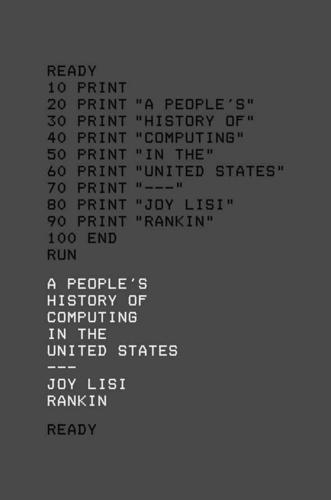
A People’s History of Computing in the United States
by
Joy Lisi Rankin
capacity” represented a very different model from the library system envisioned and implemented at Dartmouth, a system that focused on free-to-users serv ice subsidized by the institution.10 McCarthy’s speech served as the touchstone for the technocratic vision of computing for the next decade: it centered on MIT, it endorsed time-sharing, and it tied a computing utility to business. Indeed, during 1961 a team at MIT led by Robert Fano and Fernando Corbató led the effort to build MIT’s Compatible Time-Sharing System (CTSS), which they widely publicized and soon planned to expand.11 Although Corbató envisioned MIT’s system as a resource for the entire university and local Cambridge community, it nonetheless remained the domain of scientists and engineers. When J. C. R. Licklider, another MIT Centennial participant, accepted the directorship of the Information Processing Techniques 114 A People’s History of Computing in the United States Office at the Advanced Research Projects Agency (ARPA) in 1962, he focused his attention on familiar f aces and places, including MIT.
…
By the summer of 1961, his team had connected two PLATO terminals to the mainframe computer and ensured that two students could use t hose two terminals at the same time.38 Although the two- terminal time-sharing system (known as PLATO II) was barely operational in the summer of 1961, the team started planning a 178 A People’s History of Computing in the United States multiple-terminal system.39 The fall 1962 prog ress report communicated plans for a total of thirty-t wo all-new terminals connected via time-sharing (this multiple-terminal time-sharing system was known as PLATO III).40 All of this occurred very early in the days of time-sharing. Fernando Corbató and his colleagues at MIT first discussed their Compatible Time-Sharing System at the Spring Joint Computer Conference in 1962.41 John Kemeny and Thomas Kurtz led the way for Dartmouth Time-Sharing in 1964. But in 1961 in Illinois, from the perspective of each user sitting at a PLATO terminal, the terminal—a nd the computer powering that terminal—was the student’s alone.
…
Corbató (1990), Charles Babbage Institute, retrieved from the University of Minnesota Digital Conservancy, http://hdl.handle.net/11299/107230; Robert M. Fano, oral history interview with Robert M. Fano (1989), Charles Babbage Institute, retrieved from the University of Minnesota Digital Conservancy, http://hdl .handle.net/11299/107281; David Walden and Tom Van Vleck, eds., The Compatible Time Sharing System (1961–1973), 50th Anniversary Commemorative Overview (Washington, DC: IEEE Computer Society, 2011), http://multicians.org /t hvv/compatible-t ime-sharing-system.pdf; Steven Levy, Hackers: Heroes of the Computer Revolution (Sebastopol, CA: O’Reilly Media, 2010). 12. John L.
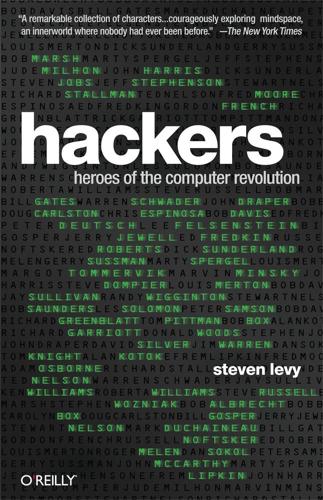
Hackers: Heroes of the Computer Revolution - 25th Anniversary Edition
by
Steven Levy
Published 18 May 2010
Mostly he used to listen to faraway cars, or birds, or insects. He also built a lot of audio equipment and dabbled in time-lapse photography. Then he got interested in computers. His father was a scientist, a friend of Minsky’s, and a teacher at MIT. He had a terminal in his office connected to the Compatible Time-sharing System on the IBM 7094. David began working with it—his first program was written in LISP and translated English phrases into pig Latin. Then he began working on a program that would control a tiny robot—he called it a “bug”—which he built at home out of old telephone relays that he got at Eli’s.
…
The biggest losers of all, in the eyes of the hackers, were those who so lacked that ability that they were incapable of realizing what the true best machine was, or the true best computer language, or the true best way to use a computer. And no system of using a computer earned the hackers’ contempt as much as the time-sharing systems which, since they were a major part of Project MAC, were also based on the ninth floor of Tech Square. The first one, which was operating since the mid-sixties, was the Compatible Time-sharing System (CTSS). The other, long in preparation and high in expense, was called Multics and was so offensive that its mere existence was an outrage. Unlike the quiltwork of constantly improving systems programs operating on the PDP-6, CTSS had been written by one man, MIT Professor F.J. Corbató.
…
After some of the software was done, Tom Knight and others began the necessary adjustments to the PDP-6 and the brand-new memory addition—a large cabinet with the girth of two laundromat-size washing machines, nicknamed Moby Memory. Although the administration approved of the hackers’ working on the system, Greenblatt and the rest exercised full authority on how the system would turn out. An indication of how this system differed from the others (like the Compatible Time-sharing System) was the name that Tom Knight gave the hacker program: the Incompatible Time-sharing System (ITS). The title was particularly ironic because, in terms of friendliness to other systems and programs, ITS was much more compatible than CTSS. True to the Hacker Ethic, ITS could easily be linked to other things—that way it could be infinitely extended so users could probe the world more effectively.
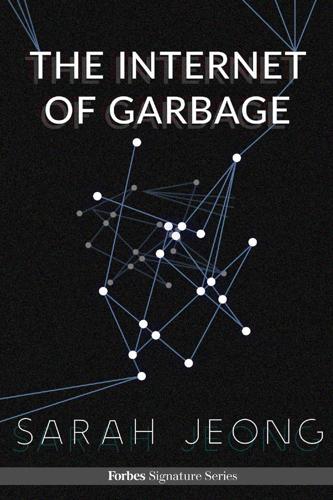
The Internet of Garbage
by
Sarah Jeong
Published 14 Jul 2015
The debate about spam and free speech has mostly fizzled out in this decade, but for the entire history of spam and anti-spam, the censorship of speech by anti-spam measures has been an ongoing concern. The very first “spam” message, according to Finn Brunton, was in fact political speech: an unsolicited mass mailing sent out on the Compatible Time-Sharing System (CTSS) network that had been developed at MIT, a network similar to but different from the Internet’s direct predecessor, ARPANET. The message was a long, impassioned anti-war speech, beginning with: “THERE IS NO WAY TO PEACE. PEACE IS THE WAY.” The “spammer” was Peter Bos, a sysadmin who had used his special privileges on CTSS to mass-message everyone.
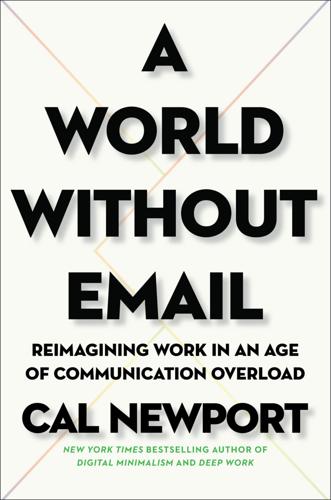
A World Without Email: Reimagining Work in an Age of Communication Overload
by
Cal Newport
Published 2 Mar 2021
To use these machines meant waiting your turn, at which point you would temporarily be given full control of the digital behemoth, hoping it would compute your program, likely inputted as punch cards, before your turn expired. Engineers at MIT, frustrated by this setup, figured there must be a better way to divvy up mainframe access. Their solution, launched in the MIT Computation Center in 1961, was called the Compatible Time-Sharing System (CTSS). And it introduced something revolutionary into the world of computing: the ability for multiple users to log in to the same mainframe at the same time using terminal machines hardwired to the mainframe. These users weren’t literally controlling the computer simultaneously; instead, the time-sharing operating system running on the big machine would switch rapidly between the different users, doing a little computation for one user before switching over to do some computation for another, and so on.
…
See also attention capital principle Carnegie Mellon University, 245 Carolingian Empire, 71–73, 77 Carpenter, Sam, 121–27 Central Intelligence Agency (CIA), 63–65 CEOs, xx–xxi, 29–30, 89, 140, 188, 201, 254, 259 Chaplin, Charlie, 120–21 Chronicle of Higher Education, The, 219, 239 clients, 13, 92, 171 attention capital principle and, 124 cycle of responsiveness and, 83 and email use, 149, 184–86, 200 firing them, 201 meeting in-person with, 54–55 overwhelming communication with, 122, 199 protocols for, 32–33, 184–86, 197–201, 204 restricting access of, 32–33, 187, 223 Trello boards and, 106–7, 159 and working in sprints, 238–39 cognitive costs, 112, 184–90, 193, 197, 200–201, 255 downtime, xiii energy, 173–77, 200, 211 performance, xviii, xxi, 15, 18–20, 29, 108, 113, 190, 255 collaboration, xviii, 6, 163, 241 dynamics of, 84–88 and email use, 81–82 history of, 84–87 hyperactive hive mind approach to, 16, 43, 51 on new workflows, 125–27, 133–34 online tools for, 105–8, 147–48 processes of, 47–51 studies of, 49–51 Columbia Pictures, 67 commons, tragedy of the, 91–92 communication asynchronous, 64–65, 68–69, 77–82, 104, 149, 208, 249 and coordination protocols, 186–87 debt, 113 digital revolution in, 179–80 efficiency and, 19, 105 before email, 69–71 “flipping the script” on, 162–63 history of, 84–87 improved protocols for, 199–201, 204, 211–12 in-person, 54–55, 70, 78, 223–26, 248–50 intra-office, 63–71 minimizing overload of, 112–14 minimizing time spent on, 151–52, 174–76 and protocol principle, 180–87 synchronous, 64–65, 78–79, 81–82 unscheduled, xvii, xx, 147, 151–52, 173 unstructured, xvii–xviii, 84–87, 162, 203, 207, 220, 258 See also constant communication communication consultants, 200–201, 237–38 Compatible Time-Sharing System (CTSS), 202–3 competitive edge, xxi, 93, 220 marketplace, 253 computer science, 78–81, 166, 208 computer-supported collaborative work (CSCW), 6–9 computers create more work, 217–18 fail to make us productive, 215–19 history of, 25–26, 202–3, 215–19 networks of, xi–xiv, 6, 66–70, 78–82, 183 personal, 67–68, 215–19, 256 revolution in, 14, 78, 180, 216, 247 time-sharing operating system for, 202–3 viruses on, xi–xiv concentration and creative types, 28–30 erosion of, 27–28 George Marshall’s commitment to, 22–25 hyperactive hive mind workflow and, 29–30 importance of, xv, 22–25 undervaluing of, xiv–xv See also focus Concept of the Corporation (Drucker), 89 conferencing software, 149, 161 Congo, Republic of, 39–42 constant communication, 28, 69 advantages of, xiv, 14, 18–20 culture of, xv–xvi, 37, 83, 261 cycle of responsiveness and, 83–84 disruptions caused by, xiv–xv, 4, 12–13, 31, 113 and high stress levels, 36–37 inefficiency of, 4–6 intertwined with work, xv, xix makers and, 30–31 overwhelmed by, 104–5, 113–14, 227, 228–29 reduction in, xx, 31–33, 37 slows down the brain, 33, 112 “Constant, Constant, Multitasking Craziness” (Mark), 7–9 content management service (CMS), 146–47 corporations, 9, 66, 89, 117, 140, 187, 217–18 Covey, Stephen, 56 craft method, 97–98, 102–3, 116–17, 121 Creative Artists Agency, 66 creative endeavors, 28–29, 227, 231–32 customer service representatives, 123, 149, 228, 230, 247–48 Dark Tuesday, xi–xiv data-mining algorithms, 47–48 data scientists, 10–12 Davidson, Mike, 206–7 Day-Timer, 56–57 decision-making, 23, 47–51, 171, 175, 228–30 deep thinking/work, xiii, 6–7, 19–20, 24, 113, 147–48, 150, 225, 243 Deep Thoughts, 52–53 Deep Work, xiv–xv, 28, 238, 243 “design sprint” methodology, 236–38 Devesh (entrepreneur) changes workflow with Trello, 104–8, 110–12, 124, 155, 159 project-board workflow of, 114–15, 120–21, 131–32, 148 and shift to card conversations, 114, 162 digital communication tools, 258 knowledge work, 260–61 networks, xxi–xxii, 248 revolution, 14, 78–79, 179–83, 247 storage, 183 Disney, 67 Distracted Mind, The (Gazzaley and Rosen), 15 distributed systems theory, 78–81 Doodle, 193 Dropbox, 146, 159 Drucker, Peter, 92 books/articles by, 88–89, 101, 117 coins term “knowledge worker,” 89, 259 as founder of modern management, 88–90 on knowledge work, 102–4, 109 on manual labor, 101 on workers’ autonomy, xix, 90, 109–11, 121, 126, 141, 259 economic growth, xiv, 101, 103, 253, 259 economic sector, 88–89, 92, 100–101, 109, 215–16, 219, 259–60 Effective Executive, The (Drucker), 89–90 egocentrism, 52–54 Eisenhower, Dwight, 20, 22–23 El Khomri, Myriam, 35 email addresses for, 194, 202–4, 255 advantages of, xiii–xiv, xvi–xviii, xx, 6, 14, 18–19, 32, 36, 55, 68–69, 77–78, 250, 258 ancient social drives and, 39–47 average use of, xvi–xvii, 9–10, 12–13, 78, 108 bulk, 250–51 contents of, 12–14 creates more work, 55–61 disadvantages of, xiv–xvi, 4–6, 24, 36, 38, 51, 58, 69, 78, 108 disconnecting from, xii–xv, 37, 39, 46, 55–58, 83–84, 232, 237 ecological, 258 eliminating need for, 162, 197 epidemic of, 35–39, 70–71 with external partners only, 31, 149, 153 frustratingly ineffective, 4, 47–55 hidden costs of, 55–56, 60 history of, xvi, 51, 58, 65–66, 202–4 how it broke work, xiv–xv and hyperactive hive mind, 77–88, 207, 259 misery-inducing, 61 misunderstanding of, 51–54 nonpersonal, protocols for, 202–5 overwhelmed by, xv, 27, 104–5, 204, 250, 258, 261 policies for, 44, 92, 115, 117, 145, 149, 184 reducing use of, xx, 31–33, 127–29, 173, 193, 211, 229–30 relying on, 247–48 rise of, 63–69, 76–78 short-message protocols for, 205–8 as “universal language,” 55 why we’re drawn to it, 86–88 world without it, xv–xvi, xx, xxii, 61 email checks average times a day, 9, 11–12, 92 by batching inbox, xiv, 36 company policies for, 35–36, 100, 102 cutting down on, 107–8, 124, 145, 223 drivers of, 190 energy-minimizing game of, 188–90, 192–93 forced to spend time on, 162–63, 200 and hyperactive hive mind, 190 putting restraints on, 35–37, 100, 102 and scheduling meetings, 188–90 email-free Fridays, xv, 92 energy minimization, 142–43, 188–90, 192–93 engineering industry, 135–36, 231–32 Enlightenment, 74, 141–42 entertainment industry, 66–67 entrepreneurs, xiv, xx–xxi, 29–30, 100, 104, 163, 188, 191, 228–29, 244.

Where Wizards Stay Up Late: The Origins of the Internet
by
Katie Hafner
and
Matthew Lyon
Published 1 Jan 1996
Messages could be dropped and picked up at any time. It was convenient, given the odd hours people kept. People within a single lab sent parades of one-liners back and forth, as well as longer memoranda and drafts of papers. The first of these programs, called MAILBOX, was installed in the early 1960s on the Compatible Time-Sharing System at MIT. Similar mailboxes became a standard feature of almost every timesharing system built thereafter. In places where people were spread out, programmers working hundreds of yards apart could exchange messages without having to get up from their desks. But often, exchanging messages in a single machine, or domain, became a superfluous exercise—like two people using walkie-talkies to converse in a one-room cabin.
…
McQuillan, John magnetic tape MAIL MAILBOX mailing lists, network mainframes Mammoth Cave “Man-Computer Symbiosis” (Licklider) Marill, Tom Markey, Ed Mark I Maryland, University of Massachusetts General Hospital Massachusetts Institute of Technology (MIT) Acoustics Laboratory at Artificial Intelligence Laboratory at Compatible Time-Sharing System at computer scientists and projects at economics department of IMP Number Six at Laboratory for Computer Science at Project MAC at Research Laboratory of Electronics at see also Lincoln Laboratory master-slave communication mathematics MCI MCI Mail MEDLINE Merrill, James Message Services Group, see MsgGroup Message Transmission Protocol, see RFC 680 MESSENGER messenger systems Metcalfe, Bob MH (mail program) microchips Microsoft Miller Analogies Test MILNET minicomputers Ministry of Defense, British Minsky, Marvin Mirkwood Tales MITRE Corporation MLFL (mail program) MM (mail program) Mockapetris, Paul modems Monsanto Chemical Company Morse code Mosaic browser mouse point and click technique with MS (mail program) MSG (mail program) MsgGroup (Message Group mailing list) Multics Myer, Ted NASA (National Aeronautics and Space Administration) Ames Research Center of creation of missile programs of network of Office of Advanced Research and Technology at space projects of National Academy of Sciences National Bureau of Standards National Library of Medicine National Physical Laboratory (NPL) British National Public Radio National Science Board National Science Foundation (NSF) National Security Agency Navy, U.S.

The Singularity Is Nearer: When We Merge with AI
by
Ray Kurzweil
Published 25 Jun 2024
BACK TO NOTE REFERENCE 73 Gordon Moore, “Cramming More Components onto Integrated Circuits,” Electronics 38, no. 8 (April 19, 1965), https://archive.computerhistory.org/resources/access/text/2017/03/102770822-05-01-acc.pdf; Computer History Museum, “1965: ‘Moore’s Law’ Predicts the Future of Integrated Circuits,” Computer History Museum, accessed October 12, 2021, https://www.computerhistory.org/siliconengine/moores-law-predicts-the-future-of-integrated-circuits; Fernando J. Corbató et al., The Compatible Time-Sharing System: A Programmer’s Guide (Cambridge, MA: MIT Press, 1990), http://www.bitsavers.org/pdf/mit/ctss/CTSS_ProgrammersGuide.pdf. BACK TO NOTE REFERENCE 74 No one can say for certain what the next computing paradigm will be, but for some recent promising research, see Jeff Hecht, “Nanomaterials Pave the Way for the Next Computing Generation,” Nature 608, S2–S3 (2022), https://www.nature.com/articles/d41586-022-02147-3; Peng Lin et al., “Three-Dimensional Memristor Circuits as Complex Neural Networks,” Nature Electronics 3, no. 4 (April 13, 2020): 225–32, https://doi.org/10.1038/s41928-020-0397-9; Zhihong Chen, “Gate-All-Around Nanosheet Transistors Go 2D,” Nature Electronics 5, no. 12 (December 12, 2022): 830–31, https://doi.org/10.1038/s41928-022-00899-4.
…
BACK TO NOTE REFERENCE 206 Gordon Moore, “Cramming More Components onto Integrated Circuits,” Electronics 38, no. 8 (April 19, 1965), https://archive.computerhistory.org/resources/access/text/2017/03/102770822-05-01-acc.pdf; “1965: ‘Moore’s Law’ Predicts the Future of Integrated Circuits,” Computer History Museum, accessed April 28, 2023, https://www.computerhistory.org/siliconengine/moores-law-predicts-the-future-of-integrated-circuits; Fernando J. Corbató et al., The Compatible Time-Sharing System: A Programmer’s Guide (Cambridge, MA: MIT Press, 1990), http://www.bitsavers.org/pdf/mit/ctss/CTSS_ProgrammersGuide.pdf. BACK TO NOTE REFERENCE 207 Robert W. Keyes, “Physics of Digital Devices,” Reviews of Modern Physics 61, no. 2 (April 1, 1989): 279–98, https://doi.org/10.1103/RevModPhys.61.279.
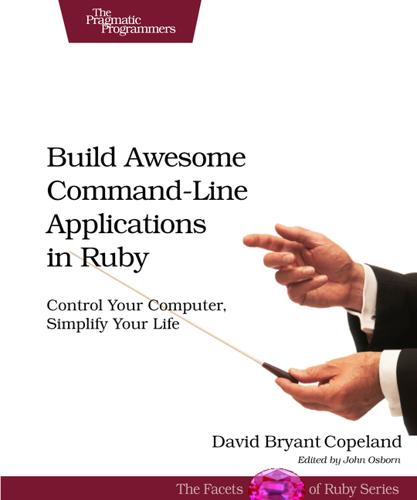
Build Awesome Command-Line Applications in Ruby: Control Your Computer, Simplify Your Life
by
David B. Copeland
Published 6 Apr 2012
The .rc Suffix Most UNIX commands use the suffix rc for the name of configuration files. According to Wikipedia,[33] this extension isn’t an acronym for “resource configuration” or “runtime configuration” but comes from a command called RUNCOM. RUNCOM was created by Louis Pouzin for the Compatible Time-Sharing System (CTSS), which was one of the first time-sharing operating systems. RUNCOM was used to execute a series of commands in succession—a precursor to what we now call a shell script. He is even credited with coining the term shell, as he describes in a post on the Internet from 2000[34] on the origins of the shell: After having written dozens of commands for CTSS, I reached the stage where I felt that commands should be usable as building blocks for writing more commands, just like subroutine libraries.

Free as in Freedom
by
Sam Williams
Published 16 Nov 2015
Nowhere was this tinkering impulse better reflected than in the operating system that powered the lab's central PDP-6 mini-computer. Dubbed ITS, short for the Incompatible Time Sharing system, the operating system incorporated the hacking ethic into its very design. Hackers had built it as a protest to Project MAC's original operating system, the Compatible Time Sharing System, CTSS, and named it accordingly. At the time, hackers felt the CTSS design too restrictive, limiting programmers' power to modify and improve the program's own internal architecture if needed. According to one legend passed down by hackers, the decision to build ITS had political overtones as well.
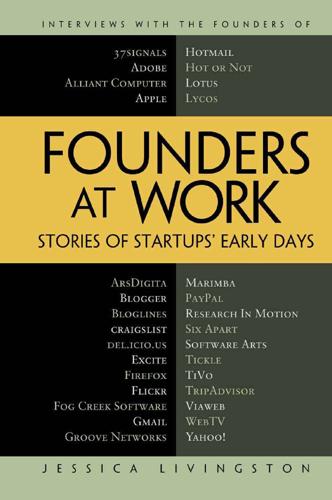
Founders at Work: Stories of Startups' Early Days
by
Jessica Livingston
Published 14 Aug 2008
That was the Lexitron. But some of them, like NBI’s (Nothing But Initials) system, were document-oriented. This was before Wang did their first screen-based word processor. I came out of the Multics project, which used the Runoff system, which Jerry Saltzer had developed for the CTSS (the Compatible Time Sharing System), which was one of the first time-sharing systems. To write his thesis, Professor Saltzer invented this thing called Runoff, which was used basically to do the word processing for it. It was a document-oriented word processor, as opposed to the page-oriented ones. The big word processors were the Mag Tape and then the Mag Card Selectric, from IBM.
…
See also ONElist and Bloglines blogs, 236 blue box, 33 Blue Moon event, 198 BMC Software, 153 bookmarking service, 223 Bowers, Ann, 46 Brady, Tim, 127–139 Brea, Cesar, 328 Breakout game, 32 Brentwood Venture Capital, 182 Bricklin, Dan, 73–74, 88, 90, 120–121 Brin, Sergey, 168, 171 Britain, 192 Broadvision, 322 Brody, Jeff, 182 Brooks, Fred, 338 Buchheit, Paul, 161–172 Buck’s beaming, 4 Buckmaster, Jim, 247–248 Burkhardt, Henry, 444 Bushnell, Nolan, 32 business development, 179 business plan, 28, 129 Byers, Brooks, 429 Byte magazine, 176 C CADO computer, 300 camera phones, 262 cameras, 262 Index 457 Campbell’s Soup, 435 Canada, 150–151 Canadian government, 261 Cantel (now Rogers), 146–147 Captain Crunch, 52 Caribou, 166 Carmen, Carl, 428 Carnegie Mellon University, 419 Cartravision, 32 Cash, Jim, 84 cassette tape interface, 52 Catapult Entertainment, 174, 175, 177 Caulfield, Frank, 429 CCBN, 442–443 Ceglowski, Maciej, 229–230 cell phone payments, 449 Chanial, Pierre, 397 Charles River Ventures, 65 chat/IM, 165 Checkbook program, 52 Chizen, Bruce, 295 CityDesk, 348, 349 Clark, Jim, 192–194 Classon, Jason, 258 click-through, 23 CMGI, 419 CMP, 119 Coit, Steve, 65 cold calling, 64 Cold War, 430 collaboration software, 103 collaborative bookmarking site, 223 collaborative filtering,275–276 Color Math program, 52 Comdex (Computer Dealer Exposition), 303, 304 Comet, 411 competition, 68–69, 108–109, 263, 303 competitive products, 293 competitors, 25, 131–133, 170, 200, 202, 237 computer games, 50–51 computer networks, 143, 268 computer programs, 37–38 computer screen images, 178 computer trainers, 142 computerized typesetting, 79 computers, 35 Condé Nast, 450 consulting, 299 Consumer Electronics Show (CES), 199 Convergent Technologies, 192 conversation view, 165 Convex Computer, 439 corporations, 279–280 Costello, Eric, 258 “couch moment,” 66–67 Courtney, Dave, 198 craigslist, 247–255 creative services businesses, 311 Cringely, Bob, 64 Crisp, Peter, 429 crypto libraries, 3 cryptography, 3 CTSS (Compatible Time Sharing System), 80 Currier, James, 387–393 D Data General, 427 Data General Nova computer, 34–36 data interchange format, 91–92 458 Index Database Backed Web Sites, 321 Davis, Bob, 419–426 Davis, Marvin, 178–179 de Castro, Ed, 427, 444 DEC (Digital Equipment Company), 75 del.icio.us, 223–232 Demo Day, 450–451 demo software, 208 Denton, Nick, 118 desktop publishing, 287 desktop-based aggregators, 234 development time, 162 Digital Equipment Corporation (DEC), 142 digital photography, 262 digital video recorder (DVR), 191, 203 DIRECTV, 199, 201 Doerr, John, 429 dog test, 390 Dollarshort, 405 Dorfman, Elsa, 320 Dotzler, Asa, 396 Dow Jones, 267–268 Draper Fisher Jurvetson (DFJ), 20–21 Draper, Tim, 20 Dunn, Bill, 278 During, John, 271 DVR.
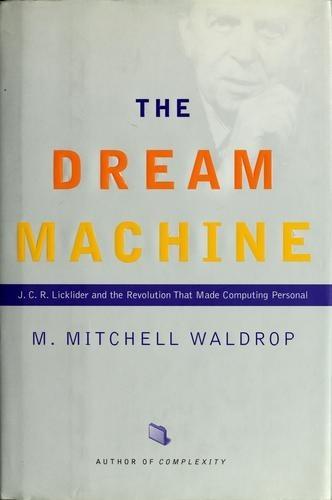
The Dream Machine: J.C.R. Licklider and the Revolution That Made Computing Personal
by
M. Mitchell Waldrop
Published 14 Apr 2001
" The prototype would be crude and primitive- basically a series of software patches applied to an IBM batch-processing operat- ing system-but it would run now, on the center's existing 709 (and on the 7090 upgrade when it arrived). Moreover, it would run the software that people al- ready had, without forcing them to change over. Thus the name: Compatible Time-Sharing System, or CTSS. The first, four-terminal demonstration of CTSS wouldn't be given until No- vember 1961 ("Hey, it talks back! Wow! You just type and you get an answer!"), and the system's actual development would continue for another year or more, even as Teager's project continued to disappear into the future.
…
It would function as a network of networks that embraced every method of digital communication imaginable, from packet radio to fiber optics-and then bound them all together through the magic of the Kahn-Cerf internetworking protocol, or something very much like it. It would be open in precisely the same way that Fernando Corbat6's Compatible Time-Sharing System (CTSS) had been: anyone could join, and everyone could participate. Indeed, monolithic central control of the Multinet would be impos- sible, if only because its on-line data sources would be distributed so widely that no central authority could ever hope to keep up with them. Instead, Lick pre- dicted, its mode of operation would be "one featuring cooperation, sharing, meetings of minds across space and time in a context of responsive programs and readily available information."2 The Multinet would be the worldwide em- bodiment of equality, community, and freedom.
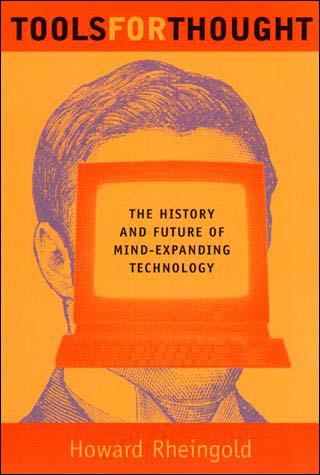
Tools for Thought: The History and Future of Mind-Expanding Technology
by
Howard Rheingold
Published 14 May 2000
The fact that they were pioneering a whole new way to use computers that would eventually bring the outside population in on it was not the first thing on their mind. They wanted to get their own hands on the system, so they built it in record time. Actually, there were two MIT time-sharing projects. The more staid project was CTSS -- Compatible Time-Sharing System, so named because it was designed to be compatible with other systems that were being constructed elsewhere. The MAC hackers were designing an operating system they called ITS -- the Incompatible Time-sharing System. They couldn't care less about making it easy for outsiders to use. They were having too much fun to share it with the kind of straight-arrow programmers who could stand to eat or sleep before finishing a good hack.
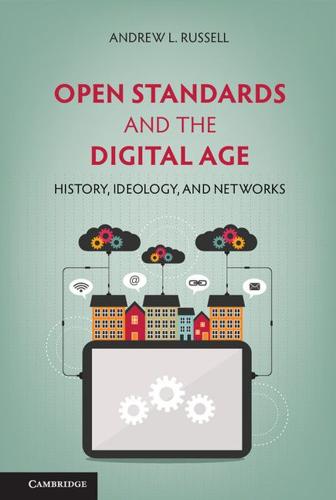
Open Standards and the Digital Age: History, Ideology, and Networks (Cambridge Studies in the Emergence of Global Enterprise)
by
Andrew L. Russell
Published 27 Apr 2014
Norberg and Judy E. O’Neill, Transforming Computer Technology: Information Processing for the Pentagon, 1962–1986 (Baltimore: The Johns Hopkins University Press, 1996); Paul E. Ceruzzi, A History of Modern Computing (Cambridge, MA: The MIT Press, 1998), 154–156; David Walden and Tom Van Vleck, eds., The Compatible Time Sharing System (1961–1973): Fiftieth Anniversary Commemorative Overview (Washington, DC: IEEE Computer Society, 2011); Martin Campbell-Kelly and Daniel D. Garcia-Swartz, “Economic Perspectives on the History of the Computer Time-Sharing Industry, 1965–1985,” IEEE Annals of the History of Computing 30 (2008): 16–36; Martin Campbell-Kelly and Daniel D.
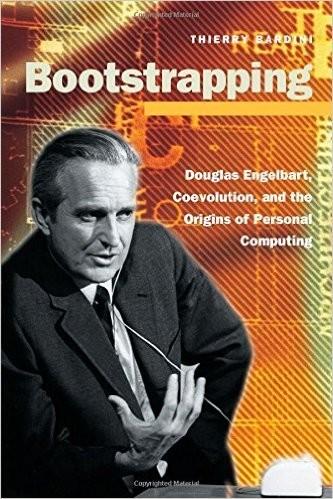
Bootstrapping: Douglas Engelbart, Coevolution, and the Origins of Personal Computing (Writing Science)
by
Thierry Bardini
Published 1 Dec 2000
See also under Xerox Palo Alto Research Cen ter Porter,E. Payson, 69 Postel, Jon, 184, 191 Pratt, John, 73, 75 Project GENIE, 3°,121,123-27,156, 252-53n6, 256nn9,I3. See also Deutsch, Peter; Lampson, Butler; Pirtle, Melvin W.; SimonYI, Charles; Thacker, Charles Project MAC, 30, 89, 12 4, 191, 25 2 - 53 n6. See also Compatible TIme Sharing System; MULTiplexed In- formation and ComputIng Services (MULTICS) Prophet, 203 - 4, 208 Prosthesis, 28, 34, 53, 80, 102, 143, 21 9, 242-44 n2 4 Pterotype, 73, 75 Punch card, 4, I2, I02, 22I QWERTY, 62, 67, 70-80, 93, 98, I02, 112, 114, 163, 21 7, 245n6, 246- 47n8. See also under Interface: and key boards Radar, 5, 12, 16, 82, 86, 88f, 130 RAND, 6,14-15,3°,9°-95,99, 248nII,257nn4-5,258n7 Raskin, Jeffrey, 226 - 27 Raytheon Corporation, 25 8n6 RD, 192 READMAIL, 192 Rech, Paul, 198 RelativIty, 47-52 Remington, 74-79, 235 n2 Requests for Comments (RFCs), 185- 9 6 passim, 258nn7,9, 259nI3 RIder, Ronald, 173 Roberts, Larry, 146, 183-84, 192, 208, 248nI4, 255n3, 257nn5-6, 25 8nn 7,9 Rosenberg, Paul Nathan (Werner Er- hard), 20 I.

Crypto: How the Code Rebels Beat the Government Saving Privacy in the Digital Age
by
Steven Levy
Published 15 Jan 2002
Could cryptography, that science kept intentionally opaque by the forces of government, help out? The answer was as clear as plaintext. Of course it could! Right at MIT there was an excellent example of a need for a cryptographic solution to a big problem. The main computer system there was called Compatible Time Sharing System (CTSS). It was one of the first that used time-sharing, an arrangement by which several users could work on the machine simultaneously. Obviously, the use of a shared computer required some protocols to protect the privacy of each person’s information. CTSS performed this by assigning a password to each user; his or her files would be in the equivalent of a locked mini-storage space, and each password would be the equivalent of the key that unlocked the door to that area.

Computer: A History of the Information Machine
by
Martin Campbell-Kelly
and
Nathan Ensmenger
Published 29 Jul 2013
At MIT John McCarthy, also a pioneer in artificial intelligence, came up with a similar, though more intimate, idea: users of the time-sharing system would communicate through typewriter-like terminals rather than via the consoles that Strachey had envisaged. The computing center at MIT was the first to implement a time-sharing system, in a project led by Robert Fano and Fernando Corbató. A demonstration version of MIT’s CTSS—the Compatible Time-Sharing System—was shown in November 1961. This early, experimental system allowed just three users to share the computer, enabling them independently to edit and correct programs and to do other information-processing tasks. For these users it was as though, once again, they had their own personal machine.
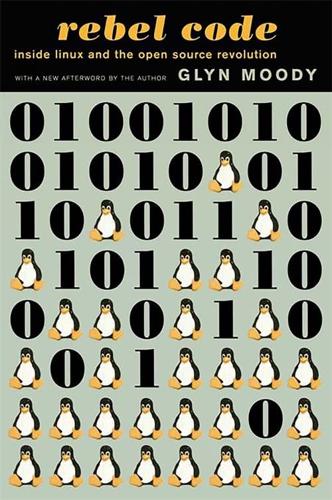
Rebel Code: Linux and the Open Source Revolution
by
Glyn Moody
Published 14 Jul 2002
This haven of playful cleverness lasted nearly ten years after Stallman took his summer job at the AI Lab. His work consisted of adding capabilities to the operating system for the AI Lab’s Digital PDP-10 minicomputer. The software was called ITS, the Incompatible Time-Sharing System–a conscious dig at the earlier Compatible Time-Sharing System, CTSS, which had been used to develop Multics, the progenitor of Unix. Although there was no real plan to his work–“I was just going along doing my usual ‘think up a feature and add it’ type stuff,” Stallman says–the result was one of the most famous and powerful pieces of software ever written, even if today it is little known outside programming circles.
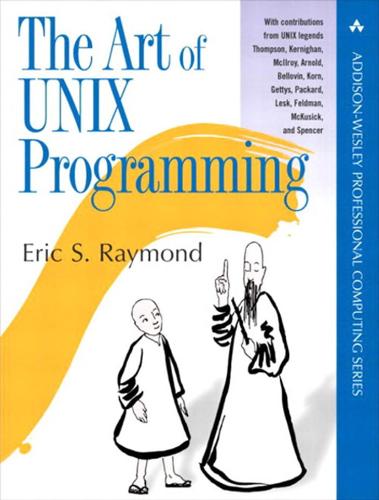
The Art of UNIX Programming
by
Eric S. Raymond
Published 22 Sep 2003
The urge to add everything that was left out the first time around all too frequently leads to huge and overcomplicated design. Less well known, because less common, is the ‘third-system effect’; sometimes, after the second system has collapsed of its own weight, there is a chance to go back to simplicity and get it really right. The original Unix was a third system. Its grandfather was the small and simple Compatible Time-Sharing System (CTSS), either the first or second timesharing system ever deployed (depending on some definitional questions we are going to determinedly ignore). Its father was the pioneering Multics project, an attempt to create a feature-packed ‘information utility’ that would gracefully support interactive timesharing of mainframe computers by large communities of users.

The Code: Silicon Valley and the Remaking of America
by
Margaret O'Mara
Published 8 Jul 2019
Yost, Computer: A History of the Information Machine (3rd ed.; Boulder, Colo.: Westview Press, 2013), 216–19. 3. John McCarthy, “What is Artificial Intelligence?,” Computer Science Department, Stanford University, revised November 12, 2007; David Walden, “50th Anniversary of MIT’s Compatible Time-Sharing System,” IEEE Annals of the History of Computing 33, no. 4 (October–December 2011): 84–85; Daniel Crevier, AI: The Tumultuous History of the Search for Artificial Intelligence (New York: Basic Books, 1993); John Markoff, Machines of Loving Grace: The Quest for Common Ground Between Humans and Robots (New York: HarperCollins, 2015). 4.

Coders at Work
by
Peter Seibel
Published 22 Jun 2009
Why they had the opportunity, they had the people, they had everything, and why it wasn't done there. And it dawned on me that there was a rivalry in their minds. Not in my mind at that point. We did Unix and they did MULTICS, which was this monster. This was just clearly the second-system syndrome. Seibel: Where MULTICS was the second system after the MIT's Compatible Time-Sharing System? Thompson: Yes. So overdesigned and overbuilt and over everything. It was close to unusable. They still claim it's a monstrous success, but it just clearly wasn't. Seibel: My understanding was that a lot of the MIT hackers viewed MULTICS that same way. They preferred ITS and the Lisp-based systems that they built.